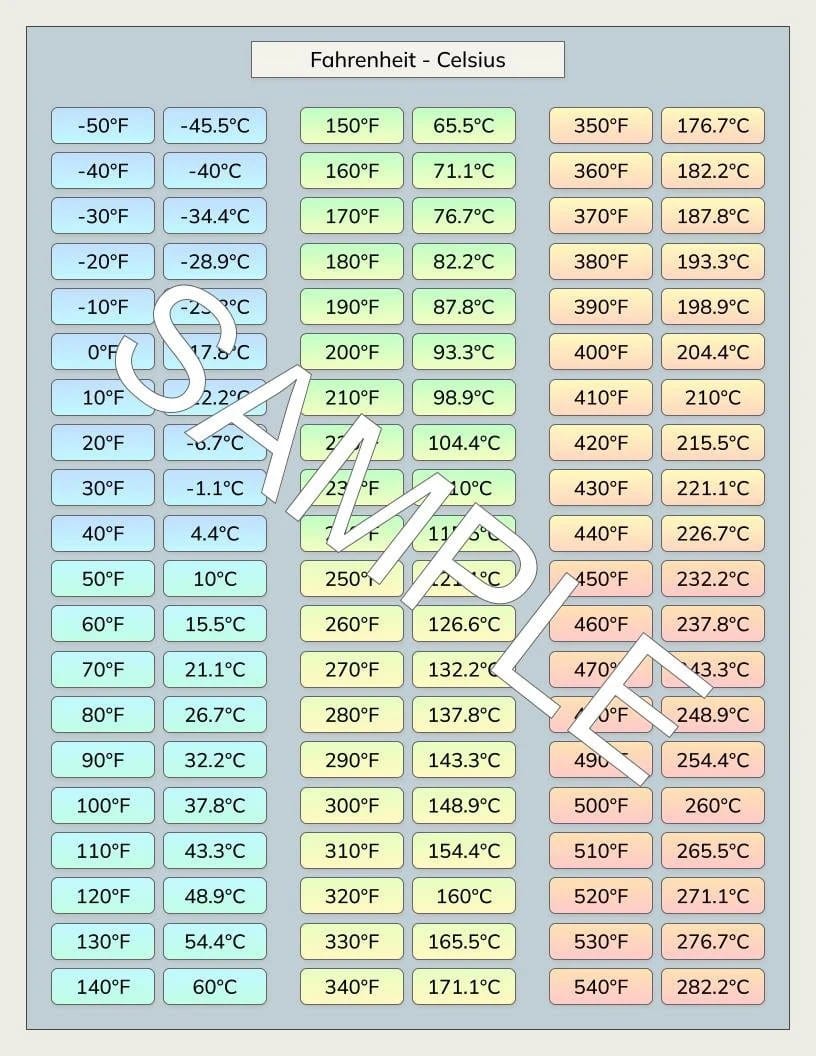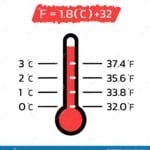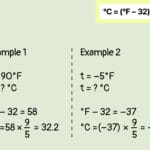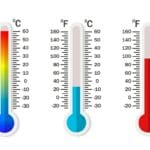Ever wondered how 36.5 degrees Celsius translates to the Fahrenheit scale? This seemingly simple conversion holds significance in our daily lives, particularly when it comes to understanding body temperature. Let’s unravel the mysteries of this temperature and explore its implications.
Unpacking the Conversion: 36.5°C to °F
Understanding what 36.5 Celsius (°C) is in Fahrenheit (°F) is essential for various reasons, from gauging our well-being to accurately interpreting scientific data.
The Conversion:
36.5 degrees Celsius is equal to 97.7 degrees Fahrenheit.
The Formula:
To convert any Celsius temperature to Fahrenheit, use the following formula:
°F = (°C * 9/5) + 32
Calculation Breakdown:
Let’s break down the conversion for 36.5°C:
- Multiply 36.5 by 9/5: 36.5 * 9/5 = 65.7
- Add 32 to the result: 65.7 + 32 = 97.7
Therefore, 36.5°C is equivalent to 97.7°F.
The Significance of 97.7°F (36.5°C)
You might be wondering, “Why is this specific temperature conversion so important?” Well, 97.7°F (36.5°C) falls within the range of normal human body temperature.
Body Temperature and Health:
Our bodies function optimally within a specific temperature range. While 98.6°F ( 98.6 in celsius ) was long considered the “standard” body temperature, research suggests that the average might be closer to 97.7°F (36.5°C).
Is 36.5°C a Fever?
No, 36.5°C is not considered a fever. A fever is typically diagnosed when body temperature exceeds 100.4°F (38°C).
Factors Affecting Body Temperature:
It’s important to note that body temperature can fluctuate slightly throughout the day and is influenced by factors such as:
- Time of day
- Age
- Activity level
- Underlying health conditions
Applications Across Various Fields
The conversion between Celsius and Fahrenheit extends far beyond just monitoring our health. It plays a crucial role in numerous fields:
Healthcare:
Accurate temperature measurement is critical for diagnosing and monitoring illnesses. Medical professionals rely on precise conversions to interpret readings and make informed decisions.
Weather Forecasting:
Weather reports often provide temperatures in both Celsius and Fahrenheit to cater to a global audience. Understanding these conversions helps us interpret weather patterns and make informed decisions about clothing and outdoor activities.
Science and Engineering:
Scientific research and engineering often involve working with precise temperature measurements. Whether conducting experiments or designing machinery, accurate conversions are vital for ensuring reliable results.
Beyond the Numbers: Understanding the Scales
To further grasp the importance of this conversion, let’s delve into the history and differences between the Celsius and Fahrenheit scales.
Celsius (°C):
- Developed by Swedish astronomer Anders Celsius in the 1700s.
- Based on the freezing and boiling points of water: 0°C for freezing and 100°C for boiling.
- Widely used in scientific contexts and in most countries worldwide.
Fahrenheit (°F):
- Developed by Daniel Gabriel Fahrenheit in the early 1700s.
- Originally based on a brine solution’s freezing point and an estimation of average human body temperature.
- Primarily used in the United States and a few other territories.
Mastering Temperature Conversions: Tips and Tricks
While online calculators and conversion tools provide instant results, understanding the formula empowers us to make quick estimations in any situation.
Rough Conversion from Celsius to Fahrenheit:
- Double the Celsius temperature.
- Add 30 to the result.
Example:
36.5°C x 2 + 30 = approximately 103°F.
Note: This is a rough estimate, and the actual conversion is 97.7°F.
Rough Conversion from Fahrenheit to Celsius:
- Subtract 30 from the Fahrenheit temperature.
- Divide the result by 2.
Example:
97.7°F – 30 / 2 = approximately 33.85°C.
Note: This is also a rough estimate, and the accurate conversion is 36.5°C.
Conclusion
Understanding the conversion of 36.5 Celsius to Fahrenheit (97.7°F) unlocks a deeper understanding of temperature and its implications. From monitoring our health to interpreting scientific data, this seemingly simple conversion proves to be an essential tool in our daily lives.
Convert 36.7 celsius to fahrenheit quickly and accurately using our conversion tool. For body temperature, 98.6 in celsius is the standard in many countries.
- Discover Long Black Pepper: Flavor & Health Benefits - April 25, 2025
- Shocking Twists: The Grownup Review: Unreliable Narration - April 25, 2025
- A Quiet Place Book vs Movie: A Deep Dive - April 25, 2025
















